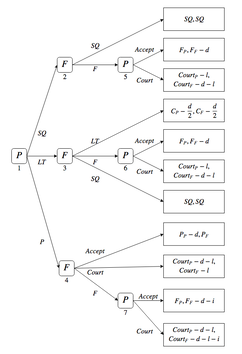Working Papers
Student Sorting and Academic Performance (Job Market Paper) |
|
This paper studies the effects of student sorting along ability on educational performance. I match more than two million Romanian high school student admission and graduation records to the universe of teacher hiring and school expenditure records. These allow me to explore different channels through which sorting impacts performance. I exploit features of the competitive high school admission system in Romania that lead to more sorting in towns with more high schools, conditional on town population. As a result, high-scoring students attend schools with progressively better peers and potentially better teachers and other school resources. Overall, higher levels of sorting exacerbate educational outcome inequalities between high and low ability students in urban areas and inequalities between top students in urban areas and their rural counterparts. I confirm these findings by focusing on high school openings in small towns. Openings lead to increases in student sorting across high schools and result in higher score gaps between high- and low-ability students. Lastly, using the data on peers, teachers and school spending, I find that the observed performance effect of sorting into a more selective school is mainly attributed to differences in teacher ability across schools (48%), compared to peer effects (25%) and school expenditures (5%). The results suggest that reallocating high ability teachers to underprivileged schools can alleviate inequalities in educational outcomes caused by student sorting.
|
The Effect of High School Duration on Educational Attainment and Labor Market Outcomes: Evidence from Ontario (with Xian Zhang)
|
|
This paper studies a policy change in Ontario, Canada, which reduced the high-school duration from five to four years. By comparing the difference between pre- and post-reform cohorts in Ontario with those in the rest of Canada, we show that the policy led to a slight reduction in high school graduation rate. Conditional on graduating from high school, shortened school length increased college and university enrollment. However, the increased enrollment in postsecondary education is offset by increases in dropout rates, leaving the educational attainment distribution unchanged. At the same time, our results suggest that the policy caused a significant wage penalty, approximately 5 to 10 p.p., conditional on educational level, for those who have graduated from high school under the new system. We propose two possible explanations for these findings: a composition effect due to misallocation of individuals into educational levels, resulting from students being less informed about their ability (“orientation effect”) and a decrease in human capital accumulation (“performance effect”). We construct a dynamic discrete choice model to assess the relative importance of these two channels, finding that the orientation effect accounts for 11-20% of the decrease in the wage premia across educational categories.
|
Ongoing and Future Projects
|
Other (Political Science)
How Cooperative is Cooperative Federalism?: A Game of Legislative Supply Under Dualist and Double Aspect Federalism (with Christa Scholtz)
|
|
Policing the boundaries between central and subnational governments' constitutional competences is core to federalism review. Courts, for example in the United States and Canada, have moved away from enforcing strict and exclusive jurisdictional boundaries, and towards concurrency rules. A chief argument for this shift in legal doctrine has been to encourage intergovernmental cooperation. We develop a formal model to explore courts' logical claim that a shift from dualist exclusivity rules to concurrency rules will reliably and predictably induce intergovernmental cooperation. Our conclusion is that "cooperative federalism" might support cooperation in equilibrium, but only under quite restrictive circumstances. We also show that, under other circumstances, it may undermine cooperation achieved under an exclusivity regime.
|



